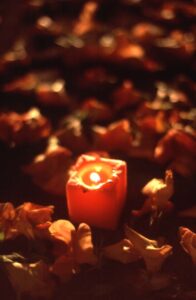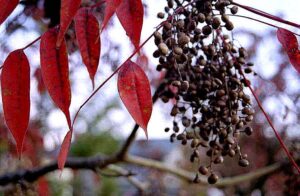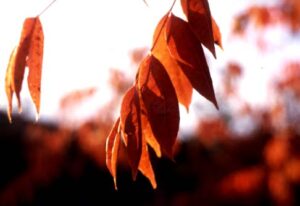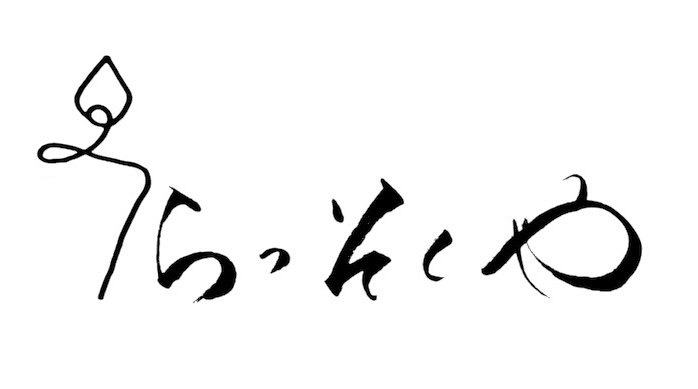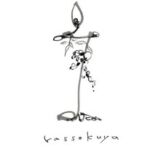Hello! I’m Ico from Rassokuya.
This is my very first blog post.
One of the most common questions I get is: “What’s the difference between Japanese candles (warousoku) and regular candles?”
So, I’d like to start by talking about that.
At their core, warousoku (Japanese candles) and Western-style candles are fundamentally the same—both are tools used to light a flame.
However, there are several key differences between the two.
● Difference in Materials
Western-style candles are typically made from paraffin, a petroleum-based material.
Paraffin is easy to mold, making it simple to create candles in various shapes and colors. Depending on the product, they also tend to produce less smoke and are very user-friendly.
Because of their flexibility, you’ll often see many cute and colorful designs.
On the other hand, warousoku are made using wax from the fruit of the Haze tree (Rhus succedanea).
You may not be familiar with the Haze tree, but perhaps you remember being warned as a child during hikes or visits to the countryside:
“Don’t touch the red leaves—they’ll give you a rash!”
Those striking red leaves in the autumn forest belong to the Haze tree, and while the tree itself is often avoided due to its irritating sap, its fruits are the raw material for Japanese candle wax.
Unfortunately, due to this troublesome trait, the Haze tree has been increasingly cut down, and it’s now rare to see them growing nearby as they once did.
I’m originally from Kagoshima, and during the early Edo period, the techniques for making warousoku were passed on to the Satsuma Domain.
Satsuma encouraged the cultivation of Haze trees, and in 1867 (Keiō 3), they presented mokurou (wood wax) made from Haze fruit at the Paris World Exposition as one of Satsuma’s representative products.
As a student who researched Japanese candles, I’ve always felt a deep connection to the history of mokurou in Satsuma.
However, the reality is that Satsuma’s candle-making industry was heavily controlled by the domain for profit, with strict regulations placed on farmers for cultivation and wax production.
Due to this oppression, many Haze trees in Kagoshima were cut down after the Meiji Restoration.
To the farmers who suffered under these policies, the Haze tree came to symbolize hardship, and even today, this history is rarely spoken of in Kagoshima.
It’s a real shame.
● Difference in the Wicks
Most Western-style candles use a wick made from braided cotton, much like kite string, that’s been bleached and soaked in wax.
In contrast, warousoku use a special wick called “toushin.”
This is made by wrapping dried rush pith (from igusa) around a core of Japanese paper, and then covering it with cotton.
Compared to regular candle wicks, these are quite thick.
That’s because the wax made from Haze fruit (mokurou) is thick and viscous, and only this kind of wick can properly absorb and burn it.
Western candles can also use alternative waxes such as beeswax or soy wax, depending on the type.
● Difference in the Flame
Warousoku flames are noticeably larger than those of regular candles.
Thanks to the special wick made from rush and cotton, an inner air pocket is created within the wick.
This allows for a steady flow of air, which leads to one of the defining characteristics of Japanese candles:
the flickering, living flame.
Even without wind, the flame will sway and shift—as if it’s breathing—stretching upward and shrinking down, creating a range of subtle, beautiful movements.
A little side story: in the past, during traditional Japanese tea ceremonies, it’s said that people would enjoy the subtle art of sliding door paintings (fusuma-e) by candlelight alone.
A tea ceremony at night? What an intriguing image.
Imagining guests sipping tea and conversing while the candle flame subtly transformed the artwork’s expression… it’s fascinating.
I’d love to try this with my family sometime.
Another feature of warousoku: thanks to their large flame, they’re hard to extinguish—even with a bit of wind!
Let me know if you’d like to use a more casual, poetic, or professional tone—I’m happy to adjust the translation to fit the voice of your brand or audience.
thank you.
